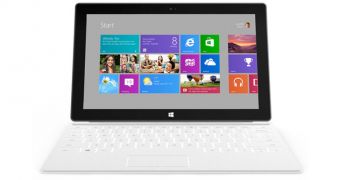Several device manufacturers around the world have already criticized Windows RT and even abandoned it completely, deciding to stick to the full version of Windows 8 to provide support for traditional software to buyers.
Recently, Julie Larson-Green, Microsoft’s former Windows boss who’s now taking over a new role within the company, hinted that Windows RT and Windows Phone could merge very soon, most likely because the tablet-oriented operating system isn’t quite a successful product right now.
“Terry Myerson and the OS group are really looking at how we make sure we've got a world-class mobile operating system moving forward, and what will that mean for our tablet and mobile strategy. I think there's a lot of opportunities to do some things there that take that forward in an interesting way,” she recently said during the Goldman Sachs tech conference.
And still, in a new interview with Re/code, Larson-Green says that Windows RT isn’t going to die anytime soon, as Microsoft still plans to improve the platform and add new features that would help boost the consumer appeal of tablets and devices running it.
What’s more, Larson-Green claims that her words might have been misunderstood, which means that Redmond is still planning to release new versions of the operating system as part of the upcoming updates for the core Windows platform.
“Terry has been talking a lot about how we are going to bring things together and how the experience is really continuous, from phone to tablet to a PC. People kind of misconstrued it to mean it is the end of ARM[-based] Windows or Windows RT, but that is certainly not the case,” she said in the interview.
Windows RT, which has originally been installed on the Surface RT tablet, was officially launched on October 26 but, just like the core Windows 8 version, received an update in October 2013.
Windows RT 8.1 comes with lots of improvements for the modern UI, including new customization options for the Start screen, a revamped PC settings menu, a Start button that’s extremely useful if you’re working on a Surface with a mouse and several other enhancements support to improve the experience on a Windows RT tablet.
At the same time, Windows RT 8.1 was specifically tweaked in such a way that the operating system would provide longer battery life to devices running it, but also enhanced stability and performance, which makes a Surface RT, for example, a bit more appealing for buyers worldwide.

 14 DAY TRIAL //
14 DAY TRIAL //